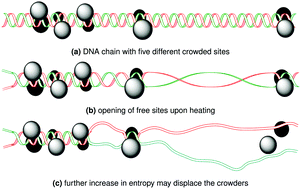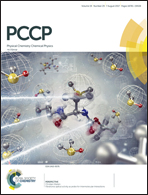DNA melting in the presence of molecular crowders
Abstract
We study the opening of double stranded DNA (dsDNA) in the presence of molecular crowders using the Peyrard–Bishop–Dauxois (PBD) model. It is a known fact that about 15–20% of the total volume of a cell is occupied by molecular crowders. The presence of crowders in the model is represented through the potential depth in the Morse potential. Using equilibrium statistical calculations we find the melting profile and the melting probabilities of the chain. We found that the melting temperature, Tm, increases in the presence of a crowder. This is due to the fact that the crowders occupy a substantial amount of the system volume and hence reduce the free volume available to the DNA molecule. This restricts the free movement of base pairs and hence the DNA molecule, which results in an increase in the melting temperature of the DNA molecule. We also find a correlation between the melting temperature and the crowder density of the solution. The power law behaviour shows that the melting temperature scales linearly with the crowder density. At a given density, a higher density of crowder may suppress the free movement in the DNA molecule, which will increase Tm. Although the temperature changes occurring in vitro seem to be smaller than those observed in this work, the results demonstrate interesting features of the opening of DNA molecules in crowded environments.



 Please wait while we load your content...
Please wait while we load your content...